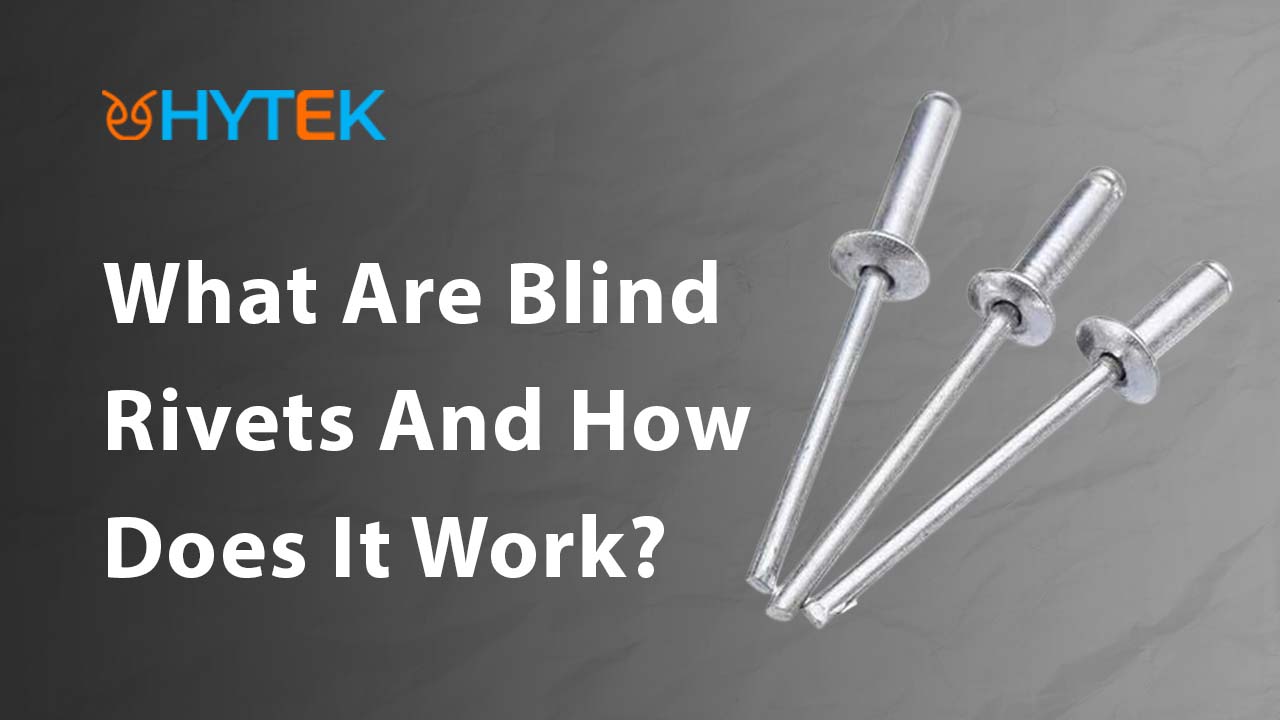What Are Blind Rivets and How Does It Work?
While using fasteners, it’s likely that the minute differences in hardware can have a great impact on the result and calibration of your project. A rivet helps join two materials firmly and has the capability to withstand any tensions and vibrations. In this blog, let’s find our what are blind rivets and its working.
What is a Blind Rivet?
Blind Rivets are innovative fasteners which can get inserted without any proper entry or view of the rear end of the object that’s being riveted. Usually, solid rivets and bolts require access to either side of the workpiece for being able to work with a rivet hammer on one end and bucking bar on another end. This was the process followed before the invention of blind rivet. Before there were numerous projects that couldn’t be executed properly because of the blind side.
To the material you wish to rivet, the blind rivets are put into the small hole in it. It consists of a rivet and an added mandrel. When the rivet is kept in place with the riveter, the mandrel is pulled back. The rivet gets deformed when you draw the mandrel back.
The mandrel is drawn back by exerting pressure on the sides outward. This process has to be continued until the mandrel is broken. This is how the enlarged back side of the rivet is created which will hold together the materials.
Blind rivets are classified based on the rivet material and the mandrel material. For eg: if you see Most commonly fasteners are made of either nickel-copper alloy, stainless steel, steel or different grades of aluminum. Rivet and mandrel materials have to match properly in order to avoid corrosion or weakening of blind rivets.
Blind Rivet Parts
Working of Blind Rivet
Pop Rivets comprises two components namely Rivet body and Mandrel. Rivet body can also be called a shell or hat while mandrels can be referred to as a stem. In scenarios where access to either side of components are restricted, usually a hole is drilled into the pieces which will be connected in circumstances.
Pop rivets are then gotten into connection with the components after being fed into the bored hole. The mandrel can be pushed into the rivet body with the help of rivet gun. The rivet is expanded to include the components to be connected. Once connected the mandrel is snapped and secures the rivet in place and thus the joint is localized.
Installing Blind Rivets
Manual Rivet drivers do a decent job but when speed, time, precision, convenience is taken into consideration power tools are used. Pneumatic rivet tools or pneumatic hammers are never recommended. The blind rivet gets driven inside the hole when the fastener is installed, be it on the driver end or in the hole that is pre-drilled. The fastener is popped into place by using the compressed air force by the installer who pulls the trigger when the rivet comes in position.
Installation tools for Pneumatic and hydraulic rivet work by popping rivets in position with the help of pressurized air depending on what the application is. When the trigger is pushed due to the hydraulic pressure generated in the tool, the piston and collet begin to retract.
Application
Blind rivets help you make joints with great strength in a variety of materials like metals, wood, plastics and leather. Blind rivets are mostly used in joining sheet metal or plastic. To qualify blind rivets for being able to use on a variety of applications, rivets are made with following materials:
· Monel
· Steel
· Copper
· Stainless steel
· Aluminum
Conclusion On What Are Blind Rivets and How Does It Work?
Now we have learnt some basic information about blind rivets, often the question pops up in our mind on how to choose the right rivet. As a thumb rule, it can be noted that the right rivet should have three times the diameter than the size of the thickest metal sheet that needs to be joined.
If you are still confused, you can talk to experts like Hytek Marketing who are masters in rivet technology. They can help you with choosing the right rivet for your application requirements and they provide you with the best quality rivet available in today’s market.

